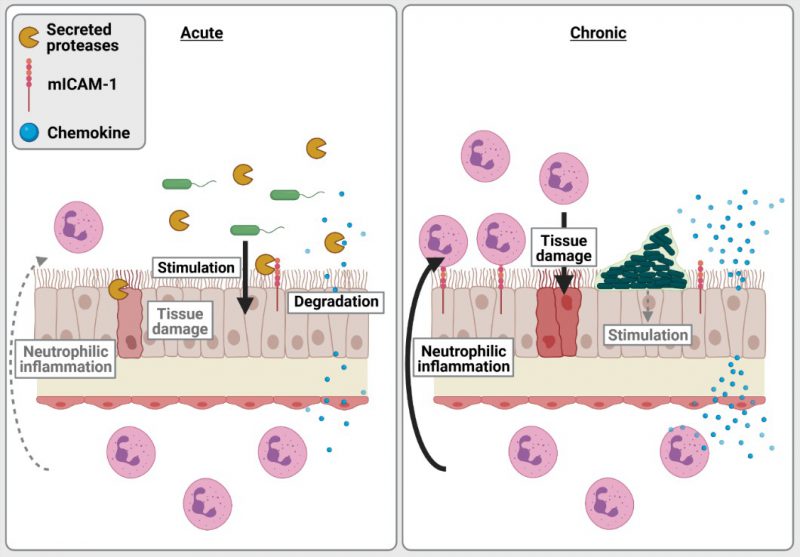Back to article: LasR-regulated proteases in acute vs. chronic lung infection: a double-edged sword
FIGURE 2: LasR-regulated proteases and neutrophilic inflammation in acute vs. chronic lung infection. In acute infection (left) such as in acute pneumonia, P. aeruginosa strains typically have a functional LasR system and express various extracellular virulence factors, leading to stimulation of the airway epithelium and immune cells to produce pro-inflammatory chemokines, cytokines and mediators such as mICAM-1. LasR-regulated proteases degrade pro-inflammatory mediators thus following P. aeruginosa to evade host immunity, dampen neutrophilic responses while causing direct damage to host cellular barriers and extracellular matrix. In chronic infections (right) such as CF lung infections, P. aeruginosa growing as biofilms is typically non-motile, is more likely to harbour loss of function lasR variants and be protease-deficient. While P. aeruginosa may be attenuated in its production of acute virulence factors, it still favours a pro-inflammatory milieu due to a lack of proteolytic degradation of host cytokines and mediators by LasR-regulated proteases. This pro-inflammatory milieu leads to an exuberant neutrophilic response that is largely ineffective at clearing P. aeruginosa during chronic infections, but causes collateral tissue damage and lung pathology.

